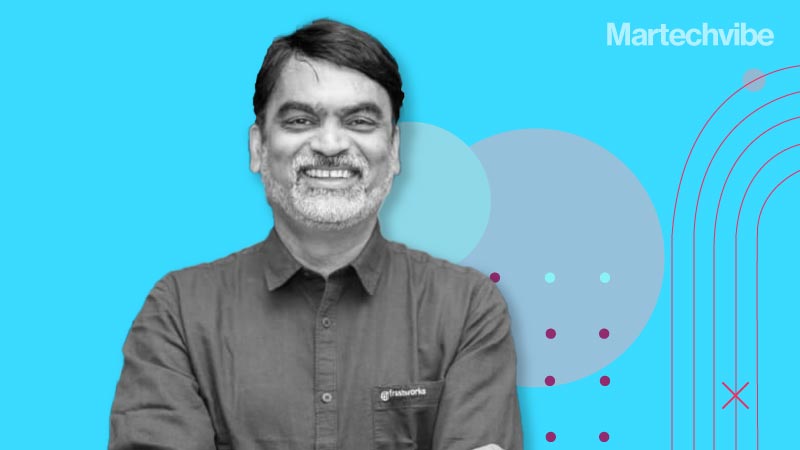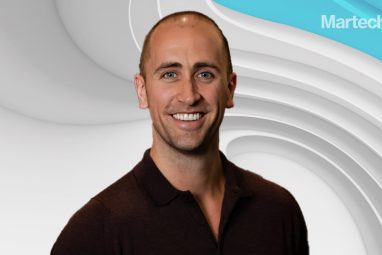Hold Your SaaS Vendor Accountable With Short Contracts
“Talk about a problem statement, how your tool solves the problem statement, and get your prospective customer’s attention. And for that, you need to know everything about your audience,” says Prasad Ramakrishnan, CIO at Freshworks. Prasad Ramakrishnan happened to be a customer of Freshworks twice in 2013. The first time, he was looking to migrate […]
Topics

“Talk about a problem statement, how your tool solves the problem statement, and get your prospective customer’s attention. And for that, you need to know everything about your audience,” says Prasad Ramakrishnan, CIO at Freshworks.
Prasad Ramakrishnan happened to be a customer of Freshworks twice in 2013. The first time, he was looking to migrate his then employer’s help desk software. He now knows the company as both a customer, and for their product. Not much later, Freshworks’ management approached him to build their IT department. It was a no-brainer for Ramakrishnan; he liked the company and the product.
Now Senior Vice President of IT and Chief Information Officer at Freshworks, he is helping the employee and customer engagement product company address customer engagement problems in the marketplace. Martechvibe spoke with Ramakrishnan about intelligent martech stacks and their role in a company’s digital transformation.
Ramakrishnan says businesses should focus on getting ROI in a short period. If the SaaS vendor does not innovate or create a product adding value to the marketplace or you as a customer, you can shift to a different SaaS player.
Excerpts from the interview;
Customer experience, revenue growth and operational efficiency are at the core of digital transformation. How do these factors play a role in deciding the future direction of the tech stack advancement at Freshworks?
Digital transformation entered the enterprise industry close to 10 or 15 years ago. Before that, we were in non-digital mode. We traversed from mainframe to packaged applications to SaaS. When we transform our business, technology today has become the foundation on which the entire company will change.
At Freshworks, we are constantly reinventing our ways of work to ensure efficiency and that our users run their jobs smoothly. We have people working with our finance, marketing, sales, and HR departments to transform different parts of the business, and each of these transformations has a theme. The theme of customer experience comprises EX too.
The Freshworks employee is building products, paying the bills, taking care of the facilities, and interacting with our customers. For me, it is an employee experience, which translates to a better customer experience.
What’s best at Freshworks is we interact and work with our products internally, which gives us a chance to transform how that tool is built and deployed to our end users. With an employee base of 5,000 plus employees, our tools are getting pressure tested before it even comes to the market.
What are the top challenges that enterprises face while achieving digital transformation?
The challenges are multifold;
Not having a sponsor: People don’t look at the process as a transformation and a journey but instead as a project. Considering I’m going to do the digital transformation of my HR system, and they put boundaries around it, thinking of it as a project, this is one of the biggest reasons digital transformations fail—not having a sponsor.
You must ensure that apart from the team working on transforming the journey, there is an internal sponsor. So for HR transformation, you need a chief HR or people officer. For a go-to-market change, you need marketing and sales leaders.
No focus on adoption: While explaining adoption, I use the phrase – “Operation successful, but patient dead.” The transformation will fail if you don’t consider how it will get adopted. You may have done everything required, but if people don’t embrace it and continue following the old way, they are not transformed. Ensuring you have solid change management to improve adoption is a critical success factor for digital transformation.
Solutions looking for problem: Technologists tend to get excited with technology; sometimes, it becomes a solution looking for a problem rather than a problem requiring a solution.
No Business buy-ins: Technology is not for technology’s sake; it is an enabler for a business function. If you don’t get the business buy-in, you won’t get them involved in the early stages of the transformation regarding designing and providing feedback on the business processes. It’s almost like you are working on different islands, where the business is thinking its own thing and your thoughts don’t match.
What are the advantages of a 100 per cent cloud-based and SaaS-based tech stack?
When we buy SaaS-based tools, we purchase a service—like a utility you are buying. The transition from legacy software to the new SaaS-based tools was challenging; it incurred capital expenditure. When we started introducing SaaS-based and cloud-based products, it was a dual cost for some time. We had to justify the value proposition to the CFO for moving from the earlier model to the new one.
Now you have more control as an IT practitioner to keep your costs down and direct your investment where it matters. From a human aspect, managing various functions is the prerogative of the SaaS-based vendor. The SaaS vendor now controls all your data. Hence, ensuring that you have the proper security governance process in place where you evaluate the SaaS vendor’s security posture and know how they store your customer data is a must. You need to involve information, security, governance, risk and compliance (GRC), and IT practitioners in not just functionality but in finding a solution that meets your business’s needs.
How can enterprises ensure maximum ROI from the cloud-based tech stack?
In early 2000, the SaaS-based offering was released for the first time. It was an enormous promise for the end customer, as the power to change technology was not dependent on businesses; users could make those configuration changes.
But in a few cases, some carried forward the bad habits associated with legacy software, and they became bloatware. Our team even commissioned a study to know how software becomes bloated. We check off boxes in response to a Request For Proposal (RFP). Then you buy more than you need, which manifests itself as pain. An IT practitioner who purchases a handy piece of software catering to 80- 90 per cent of needs, adjusts a few bridges to make it work for my business process and gets ROI without investing in an army of consultants to do a massive project analysis. Earlier, software was time-consuming, so with the new realm of SaaS software, no one needs to buy bloatware-overloaded tools with multiple costs.
To get ROI on your SaaS, don’t go for multi-year contracts. By signing one or two-year contracts, you are making the SaaS vendor stay accountable. If the SaaS vendor does not innovate or create a product that adds value to the marketplace or you as a customer, you can shift to a different player.
This way, the IT practitioner and the SaaS vendor are in that equation where they know they need to keep earning my business, and I know I need to ensure I am constantly evaluating whether I’m getting value right.
Another mistake people make is if you don’t get the value from what you buy in a relatively short time, you are too late to the game within a few weeks or months. By this time, the business would have changed 15 times.
Think about how everybody made great plans for 2020, but by March, we had Covid hitting us. This won’t happen every year, but these business changes occur frequently. The macroeconomic conditions change. So while getting a tool, you should be able to get the ROI from it quickly to understand if it will work for you.
What advice would you give to aspiring marketers?
The demographics of people using technology have entirely changed. With consumerisation, the entire world is now in your smartphone. The type of experience you get on your smartphone is what you expect in the business technology you are using. This means the way people interact with their software has completely changed.
Even from a marketer’s perspective, when you have face-to-face interaction, it is easier to look at the body language and determine whether you are getting the vibes from your customer. But customers have a complete digital journey through channels like chat or WhatsApp. When things have gotten digital, marketers have some additional insights about the customer that they wouldn’t have gathered in a pre-digital world when customers used to walk into their trade booth at a trade show.
When you interact with them digitally, everything you need to know about that person is available through paid or public sources. So try to see the audience you are talking to and decide what message you are trying to give them. To solve world hunger, you need to know what type of food you want to cook for them. So it is about trying to understand what this particular customer or this cohort of customers is looking for.
It is essential to understand the problem statement rather than just finding a solution to a problem. Practitioners and businesses are trying to run their businesses, which is about discovering the specific issue within the business process. Talk about a problem statement, how your tool solves the problem statement, and get your prospective customer’s attention. And for that, you need to know everything about your audience.








































































































